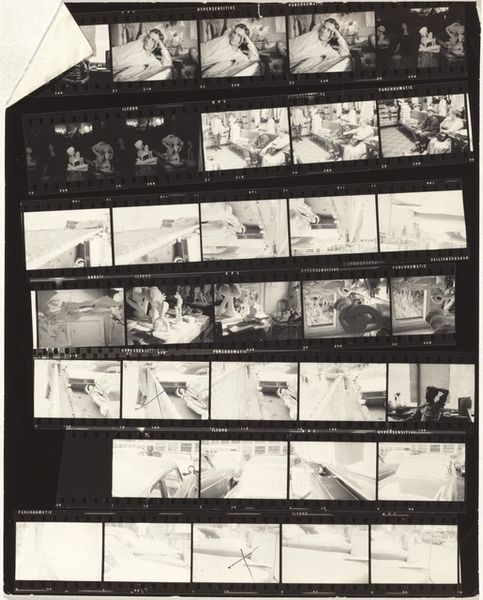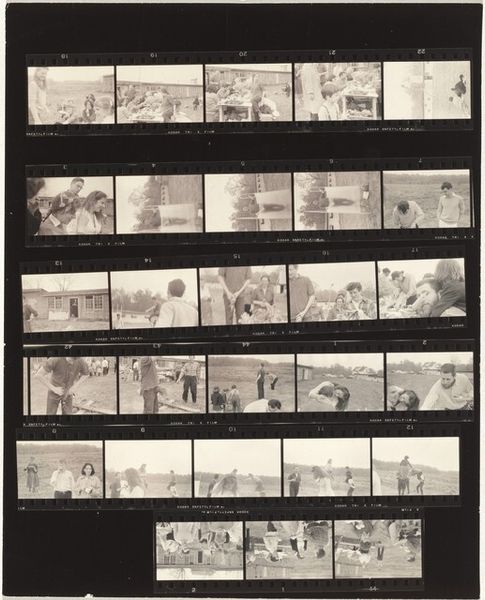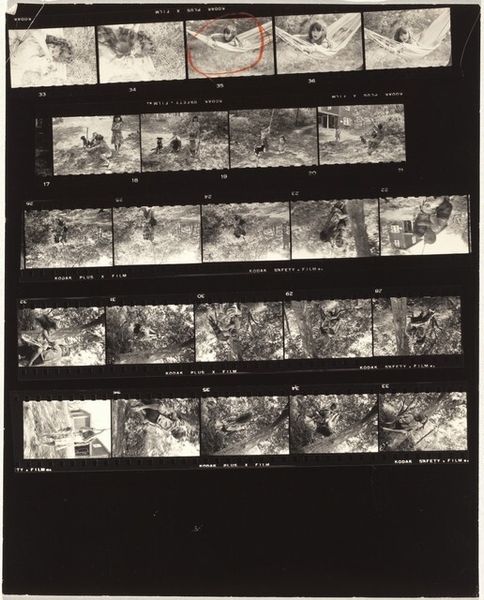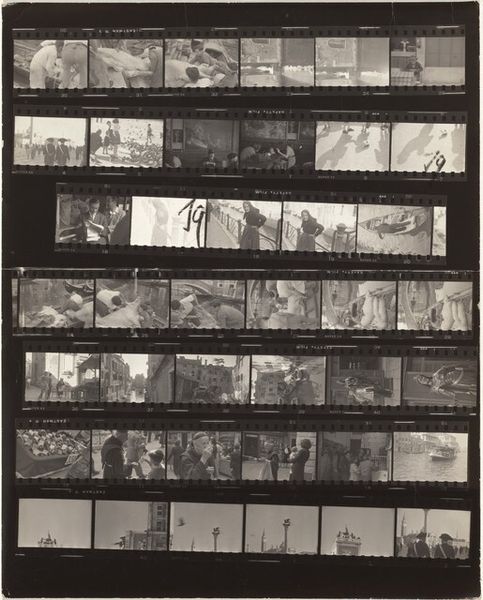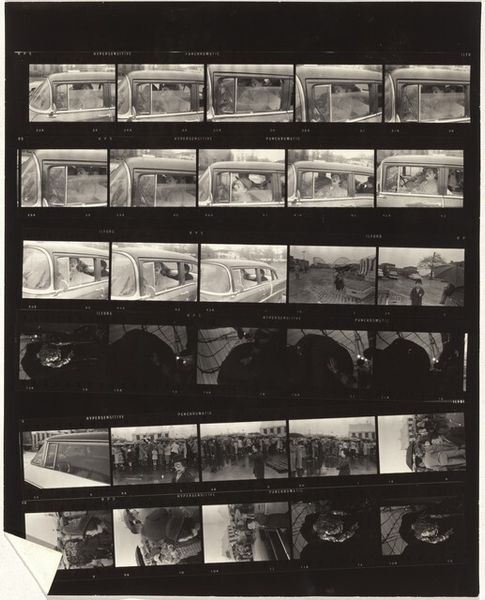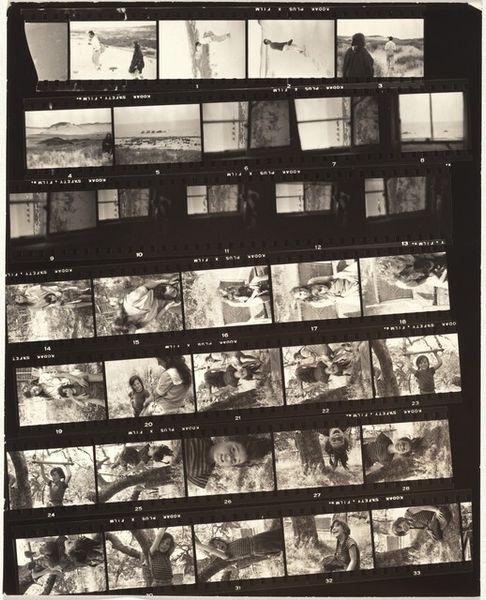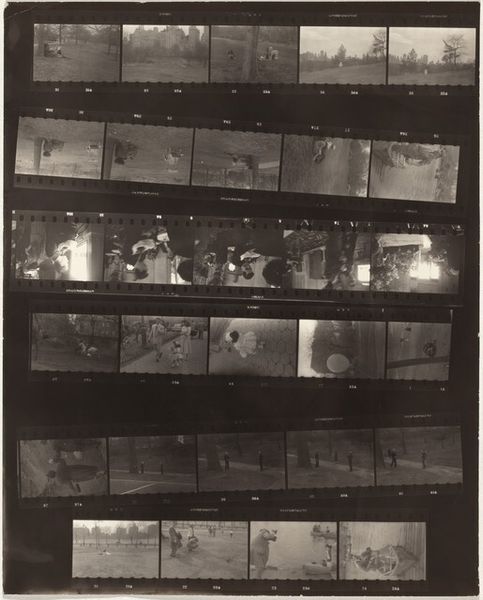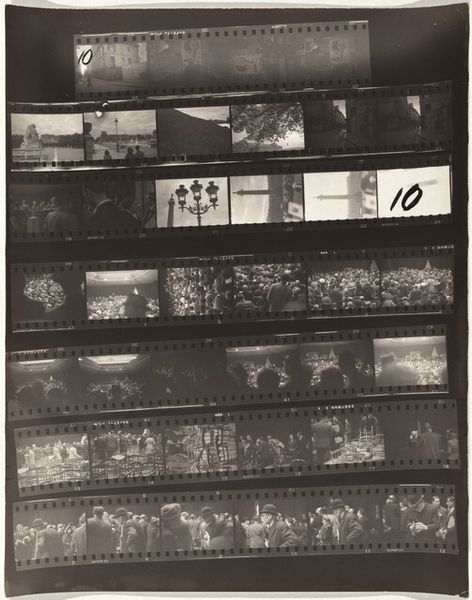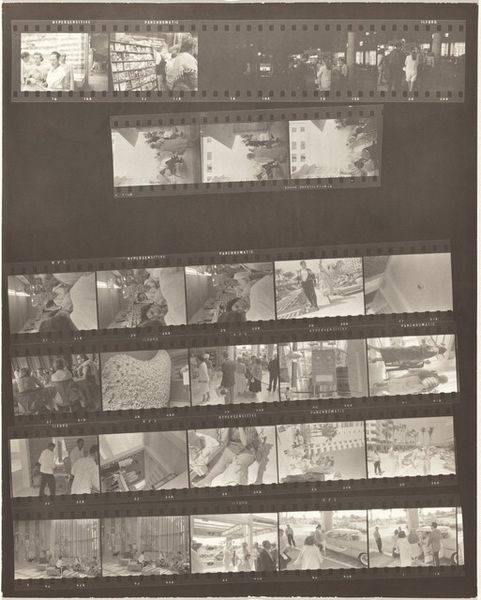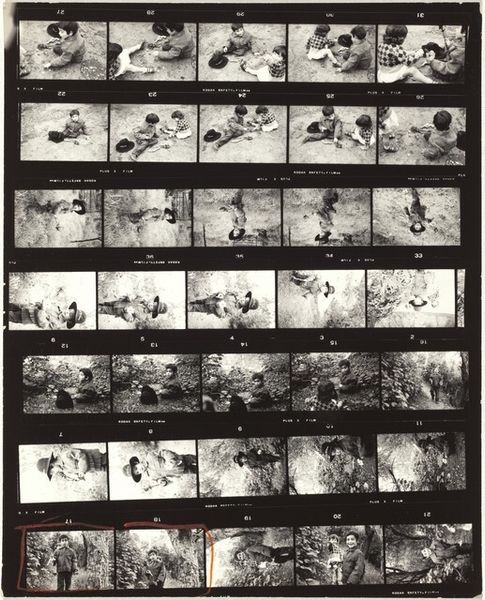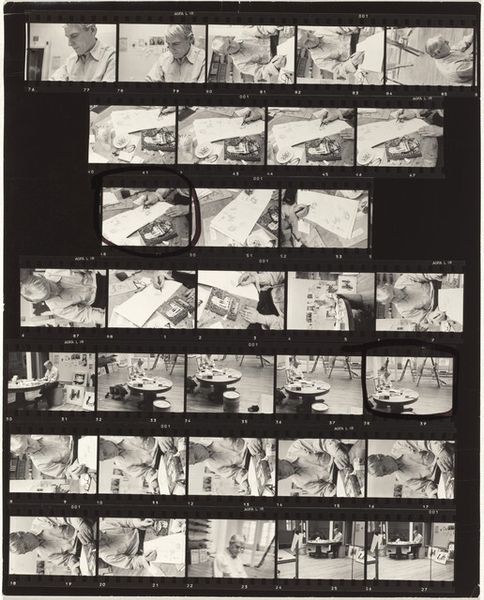
photography, gelatin-silver-print
#
wedding photography
#
social-realism
#
street-photography
#
photography
#
gelatin-silver-print
#
realism
Dimensions: overall: 25.2 x 20.3 cm (9 15/16 x 8 in.)
Copyright: National Gallery of Art: CC0 1.0
Curator: Robert Frank’s contact sheet, titled "Guggenheim 695—Butte, Montana," created in 1956. It's a gelatin silver print, an intimate glimpse into his process during his cross-country travels. My first thought is just how exposed this feels: a raw, vulnerable document of photographic practice, usually hidden. Editor: It certainly gives the impression of unedited access, but for me, there’s an elegiac mood, a sense of loss pervading these small frames. The faded images hint at a forgotten American landscape, the main street seems emptied of life, echoing postwar anxieties. Curator: You touch on something essential. In some indigenous cultures, the number 9 signifies completion or finality, doesn’t it? There are several shots in this sheet where shop window mannequins are pictured. Could they be a reflection on our relationship with symbols of completion as represented in art? Editor: Interesting you bring up indigenous perspectives. Frank, though not of Native origin himself, disrupted the idealized vision of American life that was so aggressively propagated in the media of that era. Curator: I see your point. And I think we cannot look past Frank’s history, of course. It speaks to cultural anxieties during the mid-20th century. But that disruption wasn’t merely social critique; it was a dismantling of visual conventions, wasn't it? His choices expose our dependence on pre-packaged, highly edited symbolism. Editor: Precisely, and it's relevant here because of how Frank gives primacy to unseen work: that is, the rejected and often more personal images. Frank challenges the mythology of the perfect image. He highlights the provisionality of looking—especially poignant when so many photographers erased themselves in that period. Curator: You are right. There are images which remind us of vanitas paintings – of course these are snapshots, documentary work but a faint sense of death creeps in! Do these also connect to the broader anxiety after the world war, I wonder. I cannot help seeing that the wedding pictures in particular give an impression of unease – especially the almost ghostly figure with the veil, looming in the shadows. Editor: The wedding images – and Frank being Jewish in post-war America are deeply related: the desire to create family despite historical trauma! Curator: Absolutely! Ultimately, the value lies in confronting the gaps, the questions the work makes the viewer ask, the doubts regarding the images that were and could have been made... the symbolism he teases us with through composition! Editor: Yes, "Guggenheim 695" is about acknowledging uncertainty—as well as an underbelly of both the social and visual reality. Frank's contact sheet still reverberates powerfully today, reminding us to always scrutinize the images that are offered as truth.
Comments
No comments
Be the first to comment and join the conversation on the ultimate creative platform.

